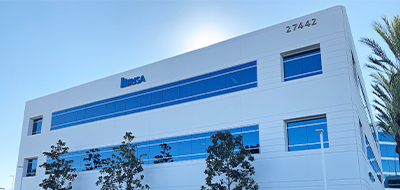When working with RISA-3D, a structural analysis and design software, it's essential to thoroughly review your model to ensure accuracy and reliability. This checklist will guide you through the critical steps to review your RISA-3D model before analysis and design. This guide is not all encompassing for every type of model and situation and therefore are recommendations only. While this guide is not all encompassing, it is a really good start for those new to RISA-3D but also can be used to create or expand your company's review guideline/standards. Check out our guide below.

- Check Code Compliance: Review and confirm that the appropriate design codes and standards are selected for your project. Ensure that all code-specific settings and parameters are correctly configured, such as load factors and material properties.
- Units: Verify that the units used in your model match the units required for your project specifications. Check that length, force, and other units are consistent throughout the model.
- Application Settings: Examine machine-specific application settings and adjust them as needed for your project. Check/uncheck settings such as:
- Lock isolated rotational instabilities without notification.
- Enforce code RECOMMENDED slenderness limits (KL/r > 200, etc).
- Enforce code required P-Delta analysis.
- Section Sets
- Ensure that section sets are correctly defined and color-coded for easy identification.
- Review the section set spreadsheet to confirm that member types are set up correctly, especially if you plan to use criteria selection tools.
- Boundary Conditions & Member End Releases
- Review and set appropriate boundary conditions for your structural analysis.
- Differentiate between pinned end releases and fixed end releases as needed.
- Identify locations where there may be instabilities and address them accordingly. Determine if additional restraints is required to stabilize the structure.
- General Consistencies
- Examine connections, especially I/J ends, to ensure they are accurately represented.
- Differentiate between segmented and continuous members, as this can affect unbraced lengths.
- Member Properties
- Rotate members if necessary to align them with the intended orientation.
- Analysis Offsets: Verify that analysis offsets are correctly set to account for any eccentricities or offsets in the structure.
- Unbraced Length: Calculate and check unbraced lengths for members where applicable. Do you want to use one of RISA's auto-calculate tools (such as typing the function 'Segment')
- Loading: Review and apply load cases and load combinations as required for your analysis.
- Pay attention to self-weight considerations, ensuring proper direction and magnitude are applied.
- Self weight: Include the self weight of your structure by opening up the Basic Load Case (BLC) spreadsheet to apply “-1” in Y gravity. Check to make sure the self weight entered is in the correct your model's direction (global X, Y, or Z).
- Load Combination and Code Check
- Confirm that load combinations are correctly defined and match the selected design code (e.g., LRFD vs. ASD).
- Ensure that P-Delta analysis is appropriately turned on for all relevant load combinations.
- Model Merge
- If working with a merged model, ensure that it has been properly integrated into your analysis.
- Solve any instabilities that may arise during the model merge process.
- Final Checks
- Check Boundary Conditions: Common instabilities occur when a member or column is rotating about its own axis. You may need to lock that axis' degree of freedom.
- Check Deflection: Turn off p-delta, re-run, and inspect deflections is the graphical window. Do you have any members that are wildly deflecting? Zoom into those areas to review boundary conditions, members end releases, the material stiffness, and the member sizes. Wildly deflecting members can cause the p-delta solution to diverge and not produce a solution.
- Member End Gaps: Review your model to make sure all of your member ends are connected to their support members. You can complete a model merge to connect member ends that are within your merge tolerance. Otherwise, you will need to manual connect member ends that are not within that merge tolerance.
By following this comprehensive checklist, you are reducing the risk of modeling errors and ensuring the structural integrity of your RISA-3D project. If you need additional training for getting started in RISA-3D. check out our many training offerings such as RISA-3D Quickstart. Click the button below.




